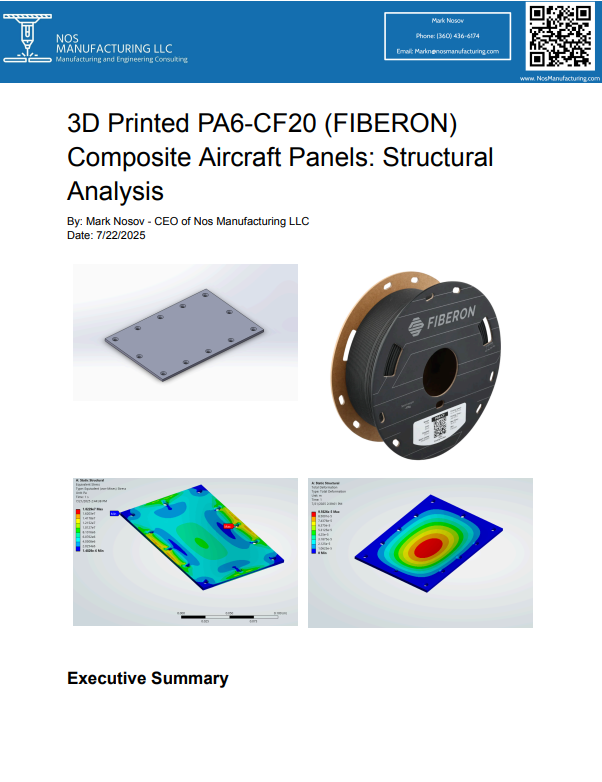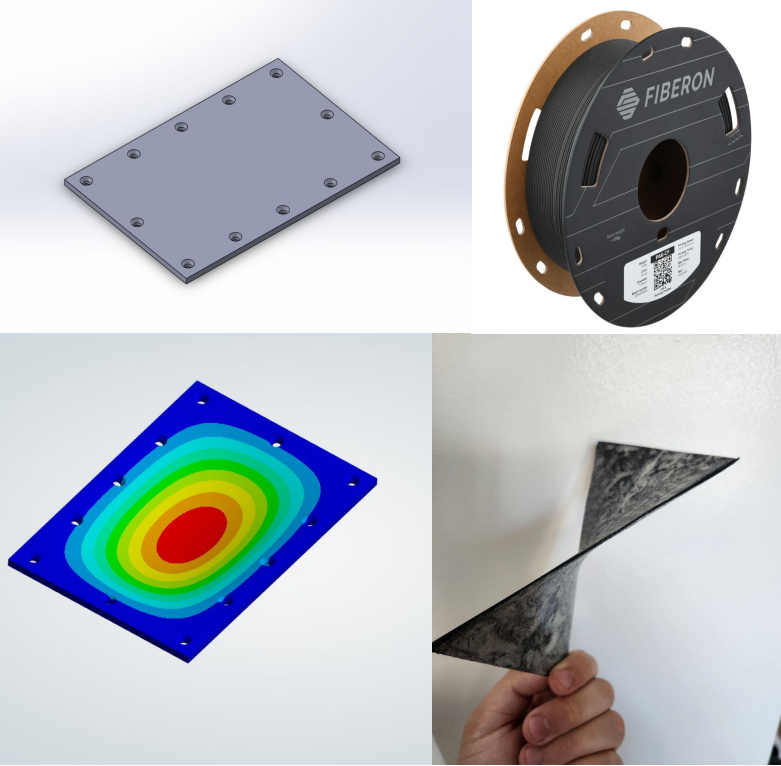Exploring a Smarter Composite: 3D-Printed Carbon Fiber Nylon Aircraft Panels with Fiberglass Reinforcement
In modern aviation and performance-focused manufacturing, material innovation is critical. This recent simulation study set out to explore the structural viability of a hybrid panel system made from 3D-printed PA6-CF20 (carbon fiber nylon) as a core, bonded with fiberglass skins on both sides. The goal? To see whether such a composite could serve as a lightweight (~30% lighter), affordable alternative to traditional fiberglass layups—particularly for non-primary aircraft structures like cabin and fuselage panels.
The motivation behind this test was simple: Can 3D printing offer both cost savings and performance, without sacrificing structural integrity?
Through a series of simulations—including tension, compression, pressure, and even bird strike scenarios—this test evaluated the performance of the hybrid material under realistic loading conditions. Despite computational limitations, the results were promising: the sandwich structure consistently showed acceptable strain, strength, and stiffness performance in most simulated environments.
Notable Findings:
The hybrid panel remained below failure thresholds in all pressure and tensile tests.
compression results revealed minor flexure but no catastrophic failure.
A bird strike test, modeled after FAA-relevant conditions, suggested survivability could be achieved with slightly thicker skins in impact-prone areas.
Acoustic dampening characteristics were observed during physical prototyping, hinting at added benefits beyond structure.


